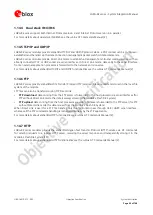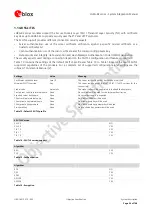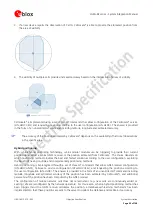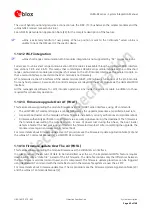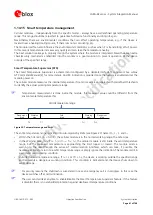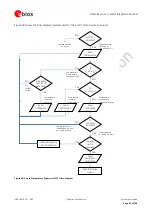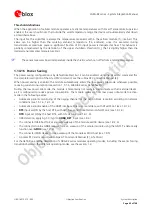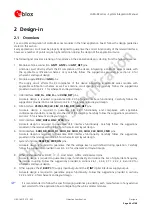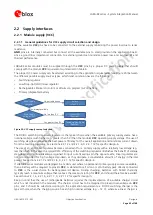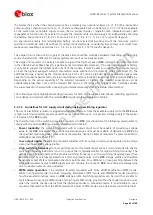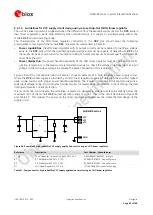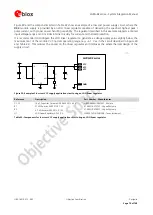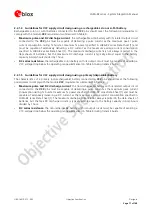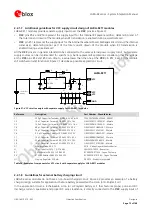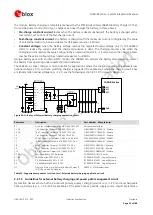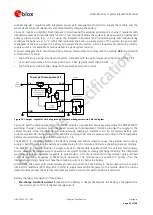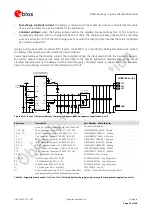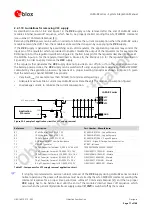
LARA-R2 series - System Integration Manual
UBX-16010573 - R02
Objective Specification
System description
Page 63 of 148
Threshold definitions
When the application of cellular module operates at extreme temperatures with Smart Temperature Supervisor
enabled, the user should note that outside the valid temperature range the device will automatically shut down
as described above.
The input for the algorithm is always the temperature measured within the cellular module (Ti, internal). This
value can be higher than the working ambient temperature (Ta, ambient), since (for example) during
transmission at maximum power a significant fraction of DC input power is dissipated as heat. This behavior is
partially compensated by the definition of the upper shutdown threshold (t
+2
) that is slightly higher than the
declared environmental temperature limit.
The sensor measures board temperature inside the shields, which can differ from ambient temperature.
1.14.16
Power Saving
The power saving configuration is by default disabled, but it can be enabled using the AT+UPSV command (for
the complete description of the AT+UPSV command, see the
When power saving is enabled, the module automatically enters the low power idle-mode whenever possible,
reducing current consumption (see section 1.5.1.4,
LARA-R2 series
Data Sheet
During the low power idle-mode, the module is temporarily not ready to communicate with an external device,
as it is configured to reduce power consumption. The module wakes up from low power idle-mode to active-
mode in the following events:
Automatic periodic monitoring of the paging channel for the paging block reception according to network
conditions (see 1.5.1.4, 1.9.1.4)
Automatic periodic enable of the UART interface to receive / send data, with AT+UPSV=1 (see 1.9.1.4)
RTS
input set ON by the host DTE, with HW flow control disabled and AT+UPSV=2 (see 1.9.1.4)
DTR
input set ON by the host DTE, with AT+UPSV=3 (see 1.9.1.4)
USB detection, applying 5 V (typ.) to
VUSB_DET
input (see 1.9.2)
The connected USB host forces a remote wakeup of the module as USB device (see 1.9.2.4)
The connected u-blox GNSS receiver forces a wakeup of the cellular module using the GNSS Tx data ready
function over
GPIO3
(see 1.9.4)
The connected SDIO device forces a wakeup of the module as SDIO host (see 1.9.5)
A preset RTC alarm occurs (see
u-blox AT Commands Manual
[2], AT+CALA)
For the definition and the description of LARA-R2 series modules operating modes, including the events forcing
transitions between the different operating modes, see the section 1.4.







